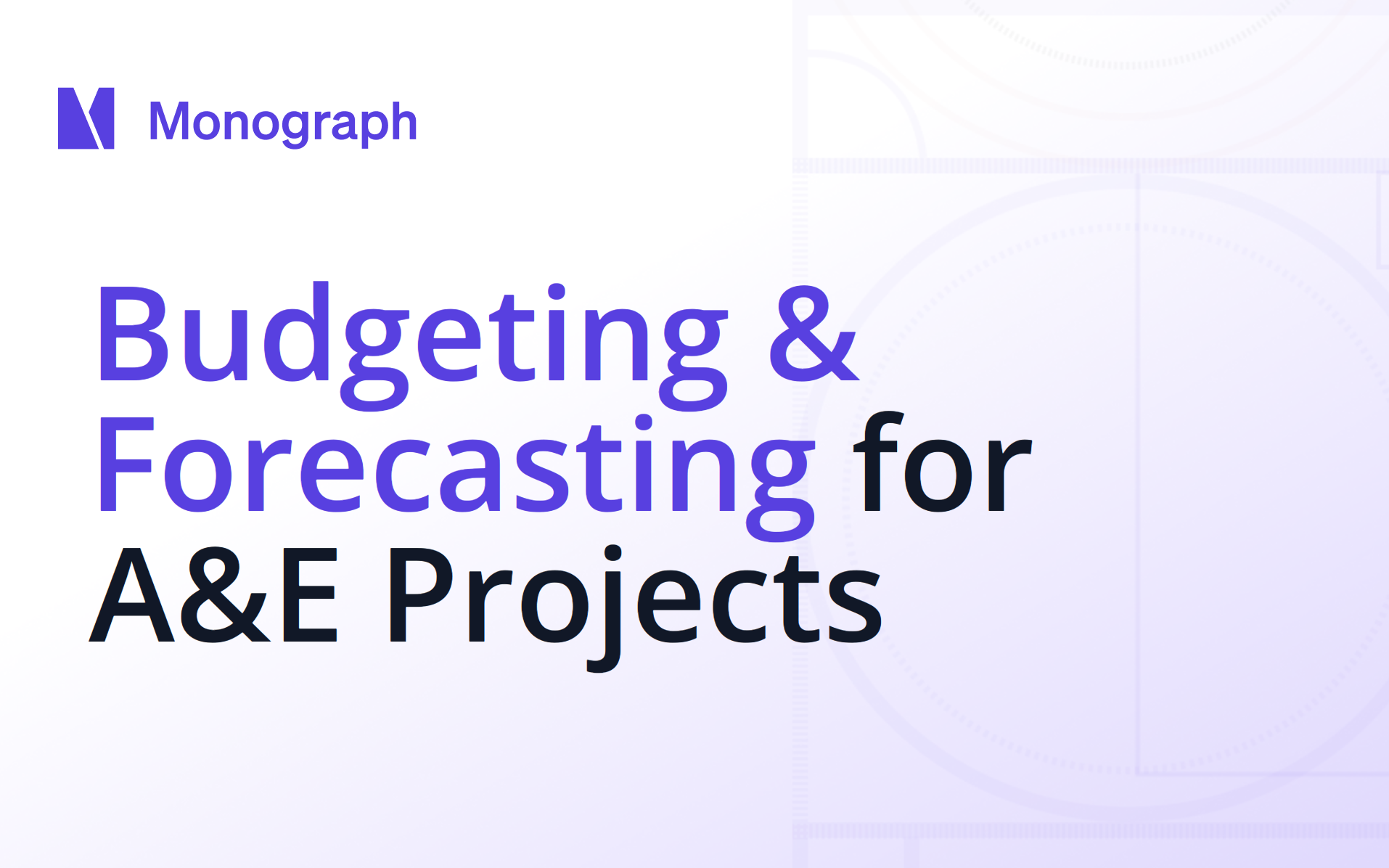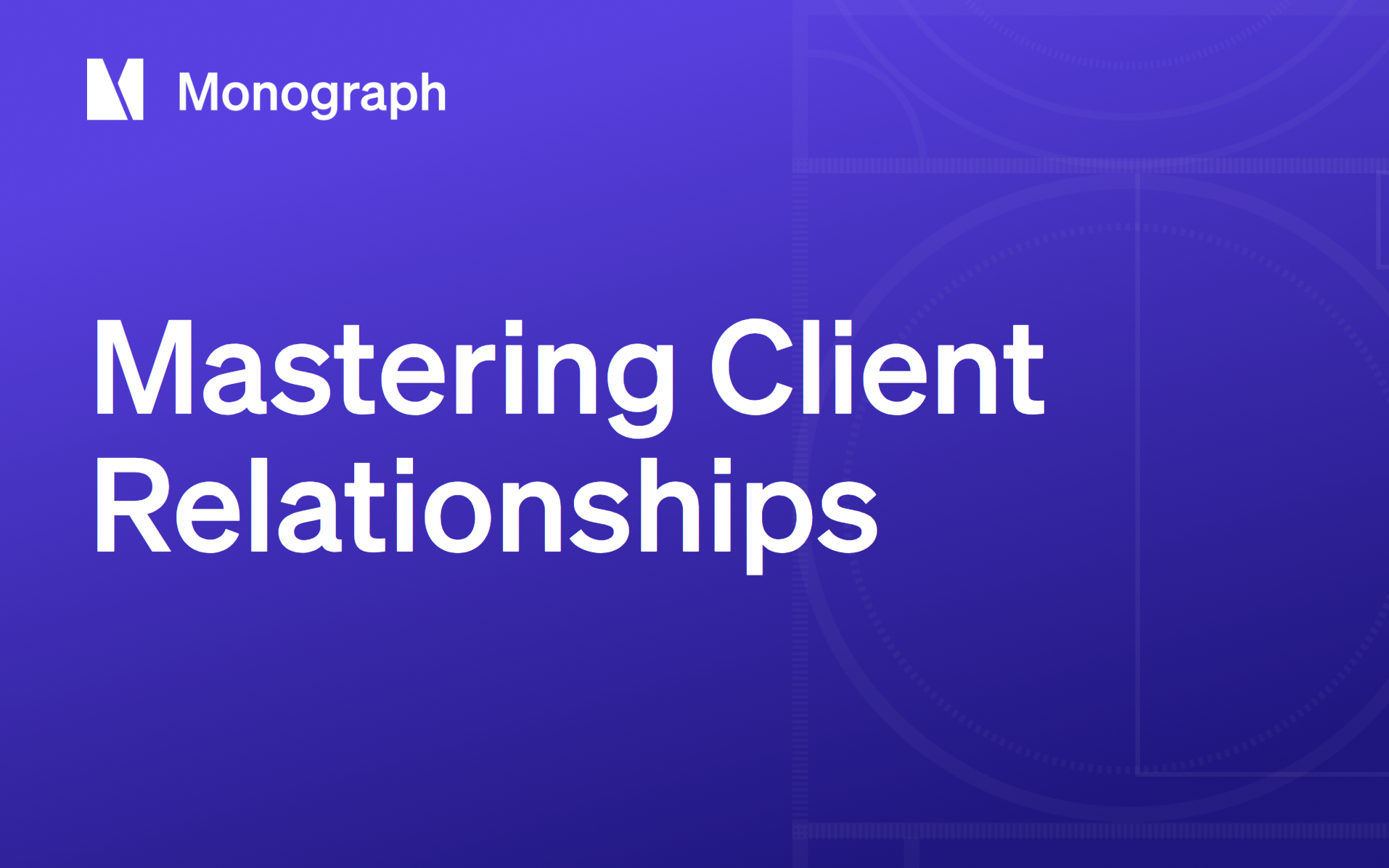Contents
Imagine cutting budget overruns significantly on your next project—exactly what firms report after adopting the workflow you're about to see. Yet many architecture and engineering practices still operate without visibility into project finances, leaving overruns to surface only when it's too late to fix them.
Why the gap? Multi-phase projects stretch over years, fixed-fee contracts invite scope creep, consultant teams multiply complexity, and labor often eats the largest slice of the pie. These variables make even the smartest spreadsheet feel like educated guesswork.
Real firms using integrated budgeting workflows report measurable improvements: 25% time savings on admin tasks, 50% efficiency gains in project delivery, and 25% less overtime for their teams. The difference comes down to having the right foundation in place.
Before we dive in, make sure you have three things on hand: a signed contract, a clear fee schedule, and records from at least three comparable jobs. With that foundation, the five-step formula—Scope, Baseline Budget, Real-Time Forecast, KPI Monitor, and Tools/Templates—transforms those raw numbers into actionable project intelligence you can actually use.
Quick-Start Workflow: The 5-Step Formula at a Glance
Navigating the unique challenges of architecture and engineering projects requires a systematic approach. Here's how the five-step formula streamlines the budgeting and forecasting process while addressing industry-specific pain points.
Scope defines your project parameters and collects historical data that informs future decisions. This initial phase sets the groundwork for everything that follows, ensuring you start on solid footing without surprises.
Baseline Budget establishes a fixed reference point that serves as a financial touchstone throughout the project. This step aligns expectations and resources from the start, reducing the chance of drifting off course.
Real-Time Forecast implements continuous projection methods that allow for dynamic adjustments as projects evolve. This proactive approach minimizes risks associated with unpredictable variables while keeping stakeholders informed.
KPI Monitor tracks key performance metrics to spot potential cost overruns before they become irreversible issues. By maintaining close watch on these indicators, you proactively address inefficiencies and improve resource allocation.
Tools/Templates selection and implementation simplifies the entire process. These technologies address the lack of budget visibility that plagues most firms, making them indispensable in the A&E field.
Each step addresses specific challenges within the industry, such as fixed-fee contracts and complex consultant relationships. Adopting this systematic approach can lead to significant reductions in budget overruns, placing you in a strong position to manage projects effectively while maintaining healthy margins.
Budget vs. Forecast vs. Plan: Know the Difference
Before you dive into numbers, you need to know which set of numbers you're looking at. Most A&E professionals mix these up, which leads to confusion when project finances go sideways.
A budget is a fixed financial target, a forecast is a moving prediction, and a plan is the roadmap that links the two.
For A&E projects, where timelines stretch across economic cycles, staff changes, and evolving building codes, this distinction matters. Your baseline budget assumes today's labor rates, but your forecast flags rising costs before they kill your margins. Your firm-wide plan tells you whether you can afford to staff up or need to hold steady.
Historical project data eliminates guesswork and helps you predict which projects will succeed based on real performance patterns, not gut instinct. Keep these definitions handy—they're the guardrails for the five-step workflow that follows.
Step 1 – Scope & Data Gathering
Budget overruns often start the moment the scope is only half-drawn. Before you price a single hour, get crystal clear on the work ahead.
A&E projects move through four familiar stations: Schematic Design (SD), Design Development (DD), Construction Documentation (CD), and Construction Administration (CA). Break the fee down by these phases first, then layer on two separate columns: one for every consultant and one for reimbursables. Mixing them into the main labor line makes true costs disappear and sets you up for "where did the money go?" conversations later.
Gather this essential information before opening any template:
- Past project benchmarks that look and feel like the current job
- Current staff billing rates by role and level
- Your signed contract showing fee structure and deliverables
- Consultant proposals with agreed-upon mark-ups
When any one of those pieces is missing, overruns hide in the gaps.
Relying on scattered spreadsheets is the fastest way to lose sight of costs. Disconnected files breed duplication, errors, and late discoveries about overruns. Centralizing scope data in one living document sets the foundation for the baseline budget you'll put together in Step 2.
Step 2 – Build the Baseline Budget
Think of the baseline budget as the project's datum line: once it's set, every future cost reading references it. Without that fixed point, you're just watching expenses drift with no way to judge whether the drift matters. Cost tracking tells you where the money is going today; the baseline establishes where it should go over the life of the job.
Build the baseline in four quick passes. Start by scoping the internal labor—break hours down by phase and role so you can see where talent, not just time, is concentrated. Principal hours cost more than drafter hours, and you need that visibility from day one. Next, add consultants with the agreed markup. Structural and MEP fees that hide in lump sums create disputes later, so expose them early in separate line items.
Then estimate reimbursables and pin down documentation rules: receipts, mileage logs, everything. Disorganized expense tracking distorts budgets more than most firms realize. Finally, insert a 10–15% contingency. Changes happen, materials fluctuate, and scope adjustments routinely break budgets. Firms that skip the buffer invite overruns.
For a $150k fixed-fee project at a 10-person firm, your worksheet might allocate $90k to labor (40% SD, 30% DD, 20% CD, 10% CA), $45k to consultants, $7k to reimbursables, and a $15k contingency. Lock that version, round labor hours up to absorb inevitable inefficiencies, and note every assumption on its own tab.
Watch for hidden phase-dependent rate shifts; they can torpedo margins midstream. A template with coded rate libraries that auto-update phase totals eliminates that risk and keeps your baseline as solid as the foundation you're designing.
Step 3 – Real-Time Forecasting & Rolling Re-Forecasts
Budgeting sets the guardrails; forecasting tells you where you'll actually land. Your baseline budget shows where you hope to finish, but a living forecast shows where the project is actually heading as hours, expenses, and scope shift week by week.
The math is simple: Estimate at Completion (EAC) = Actuals + Forecast-to-Complete. Every time you log another hour or approve another expense, the EAC reshapes itself. A rolling forecast keeps that number honest by sliding the look-ahead window, typically covering 12 to 18 months or several quarters, so you're always projecting from the current moment, not last quarter's assumptions.
A practical weekly rhythm keeps the engine humming:
Import current data: Pull timesheets and expenses through feeds from your time-tracking and accounting tools.
Update the forecast model: Re-run the EAC, recalculate burn rates, and flag variances so you can spot trouble before it compounds.
Publish variance reports: Share a quick snapshot of hours, dollars, and percent complete so the team can course-correct before small drifts snowball.
Communicate with stakeholders: Transparency now beats surprises later, keeping everyone aligned on project trajectory.
Forecasts aren't static. Adjust them when you enter a new phase, reshuffle staff, approve a change order, or put a job on hold. Monograph's signature MoneyGantt™ feature provides instant visual intelligence by translating each adjustment into a budget-to-cash progression that shows planned, logged, invoiced, and paid stages without mathematical complexity, so even non-financial teammates see the ripple effect instantly.
The silent killer is stale data. Calendar reminders or automated email digests force the weekly check-in and keep forecasts fresh. Skip two cycles and you're flying blind: the exact scenario that leaves most firms without budget visibility.
Step 4 – Monitor KPIs & Prevent Overruns
You can't fix what you can't see. When A&E firms lack timely access to project financial data, overruns surface late and margins vanish before anyone can react. The solution is a focused set of live KPIs that tell you, week by week, whether your budget and forecast remain on track.
Earned Value (EV) converts completed work into dollars, letting you compare effort to fee without guesswork. Divide EV by actual cost for the Cost Performance Index (CPI); when CPI drops below 0.9 for two straight weeks, you're spending faster than you're earning. Burn Rate reveals how quickly the fee disappears relative to schedule, while Utilization measures billable hours as a percentage of total hours. Drop below the 65 percent industry floor and profitability craters. Work-in-Progress (WIP) tracks ongoing, partially completed work that hasn't been finished or billed yet, while unbilled finished work creates the silent cash-flow killer described in every cost-overrun post-mortem.
When any KPI crosses its threshold, move fast:
Scope triage: Revisit every client request and log formal change orders to prevent further drift.
Resource shift: Pull high-efficiency team members into trouble spots and freeze non-essential tasks to improve allocation.
Client check-in: Share the data, explain options, and agree on next steps to maintain transparency and trust.
If Burn Rate runs 15 percent hot for two consecutive weeks, consider initiating corrective actions in line with your organization's project management policies. Your rolling forecast from Step 3 feeds these indicators. Keep that data fresh and the KPIs will warn you long before a small variance becomes a budget emergency.
The results speak for themselves: firms using systematic KPI monitoring report 25% less budget overages compared to their previous tracking methods.
Step 5 – Tools & Templates for A&E Budgeting & Forecasting
If you're still wrangling spreadsheets for project budgets, you're fighting the wrong battle. That blind spot explains why fragmented systems drive overruns, as missing or late financial data prevents mid-course corrections when you need them most.
Your templates need five core elements to work properly:
Standard phase codes should tie directly to your workflow, whether you're tracking SD through CA or using custom phases.
Labor categories must include current billing rates that update automatically when you adjust them firmwide.
Contingency line between 10-15% with clear rules about when and how to release those funds protects against scope shifts.
Revision log should lock your baseline and track every change with dates and reasons for complete transparency.
Consultant rows should calculate mark-ups automatically based on your standard percentages to eliminate manual errors.
With those pieces working together, you stop reverse-engineering budgets and start steering them proactively. Generic project management software forces you to rebuild A&E-specific features repeatedly, while purpose-built platforms handle this integration naturally. Whatever tool you choose, make sure it reflects how architects and engineers actually build projects, not how generic software thinks you should work.
Ready to Transform Your Project Budgeting?
The five-step workflow, from scope definition through forecasting to KPI monitoring, transforms how A&E firms manage project finances. When most practices operate without live budget visibility, implementing this systematic approach provides a clear competitive advantage. The combination of locked baselines, rolling forecasts, and integrated tools eliminates the guesswork that turns profitable projects into margin killers.
Success comes down to consistency: weekly forecasting, phase-based tracking, and choosing tools that work with your natural workflow instead of against it. Firms that embrace this discipline often report improved control over cost overruns and enhanced profit margins. The framework adapts to any project size or complexity, making it as valuable for a small residential addition as a major institutional build.
Want to see how firms like yours are improving their project budgeting and forecasting? Check out our customer stories to learn from real A&E professionals who've transformed their practice management.
Stop flying blind on project finances. See how Monograph helps A&E firms like yours gain the financial visibility needed to run profitable projects. Our signature MoneyGantt™ feature transforms complex budget data into simple visual insights, while integrated workflows eliminate the spreadsheet chaos that kills margins.
Book a demo to see exactly how the five-step budgeting framework works in practice and discover why over 13,000 architects and engineers choose Monograph to work smarter, not harder.
FAQ
How often should I re-forecast paused projects? Treat paused projects like dormant site inspections—check monthly at minimum, then refresh your forecast before restart discussions. This keeps Step 3's rolling forecast accurate and prevents budget shock when work resumes.
What if the client adds scope mid-Design Development? Document the request immediately, issue a change order, and update both your baseline (Step 2) and live forecast (Step 3). Early paperwork stops the silent scope creep that destroys budgets.
How do I set contingency for consultant-heavy projects? Use 15-20% instead of the standard 10%, and track each consultant separately so overruns stay visible. Heavy consultant coordination always takes longer than expected.
When should I involve the client in budget discussions? At every phase transition and whenever your CPI drops below 0.9. Transparency turns budget conversations into collaboration instead of confrontation.
How can I improve forecast accuracy over time? Run brief post-mortems after each project, fold actual performance back into your templates, and let historical data sharpen your next estimate. Step 1's groundwork keeps evolving with every completed project.
Read more about improving your firm's financial performance in our blog, where we share practical advice from architects and engineers who've built profitable practices.





